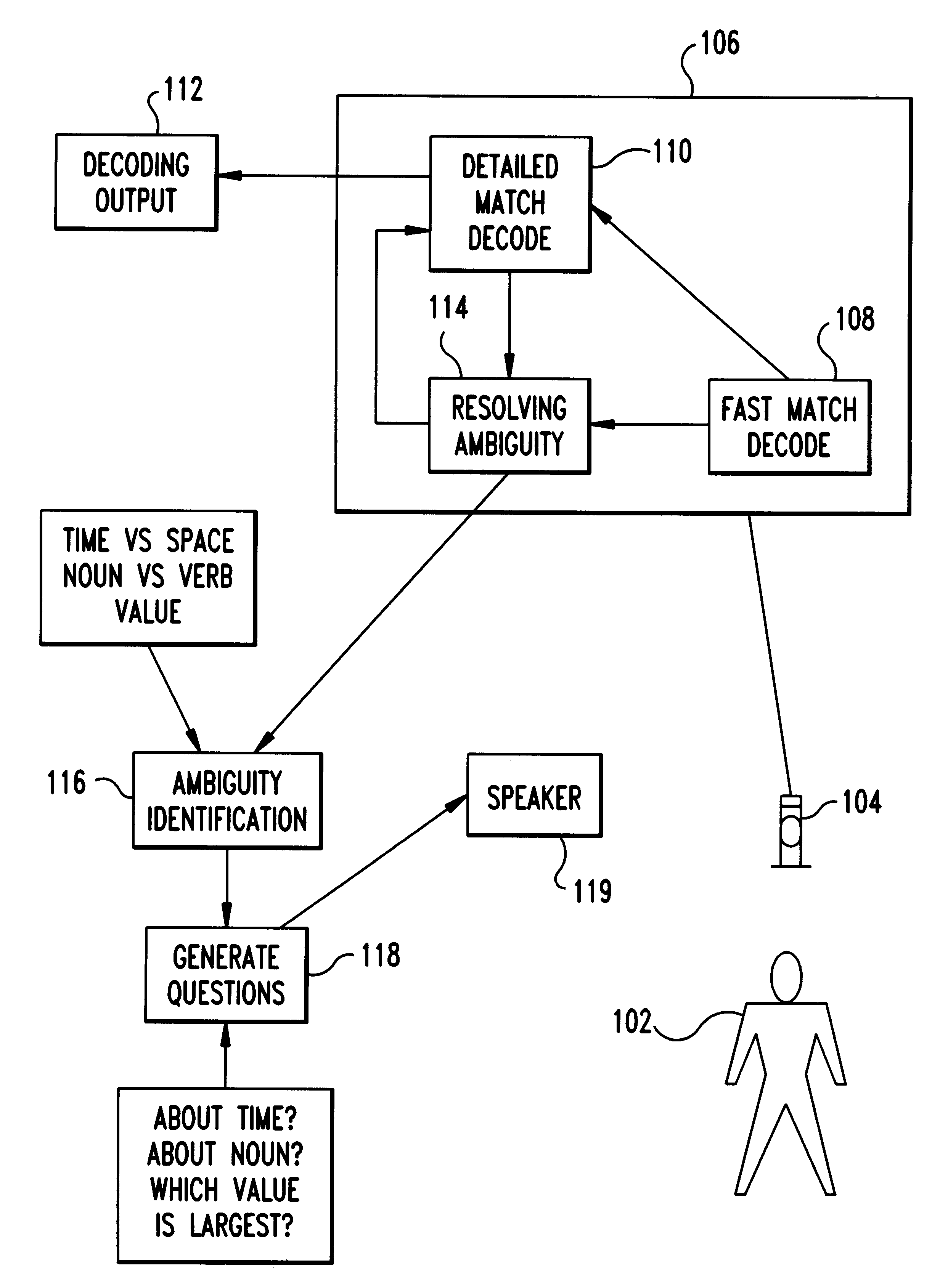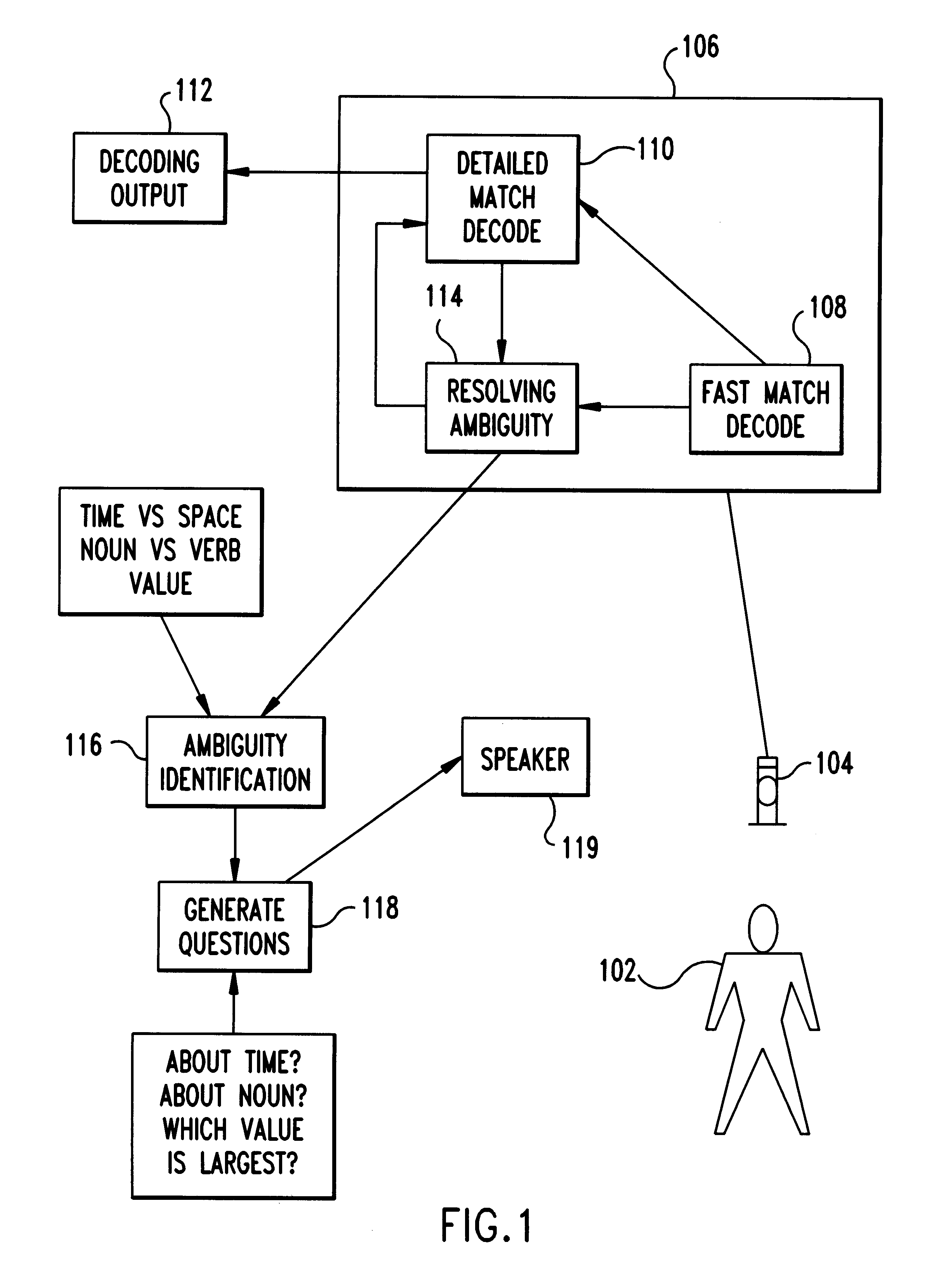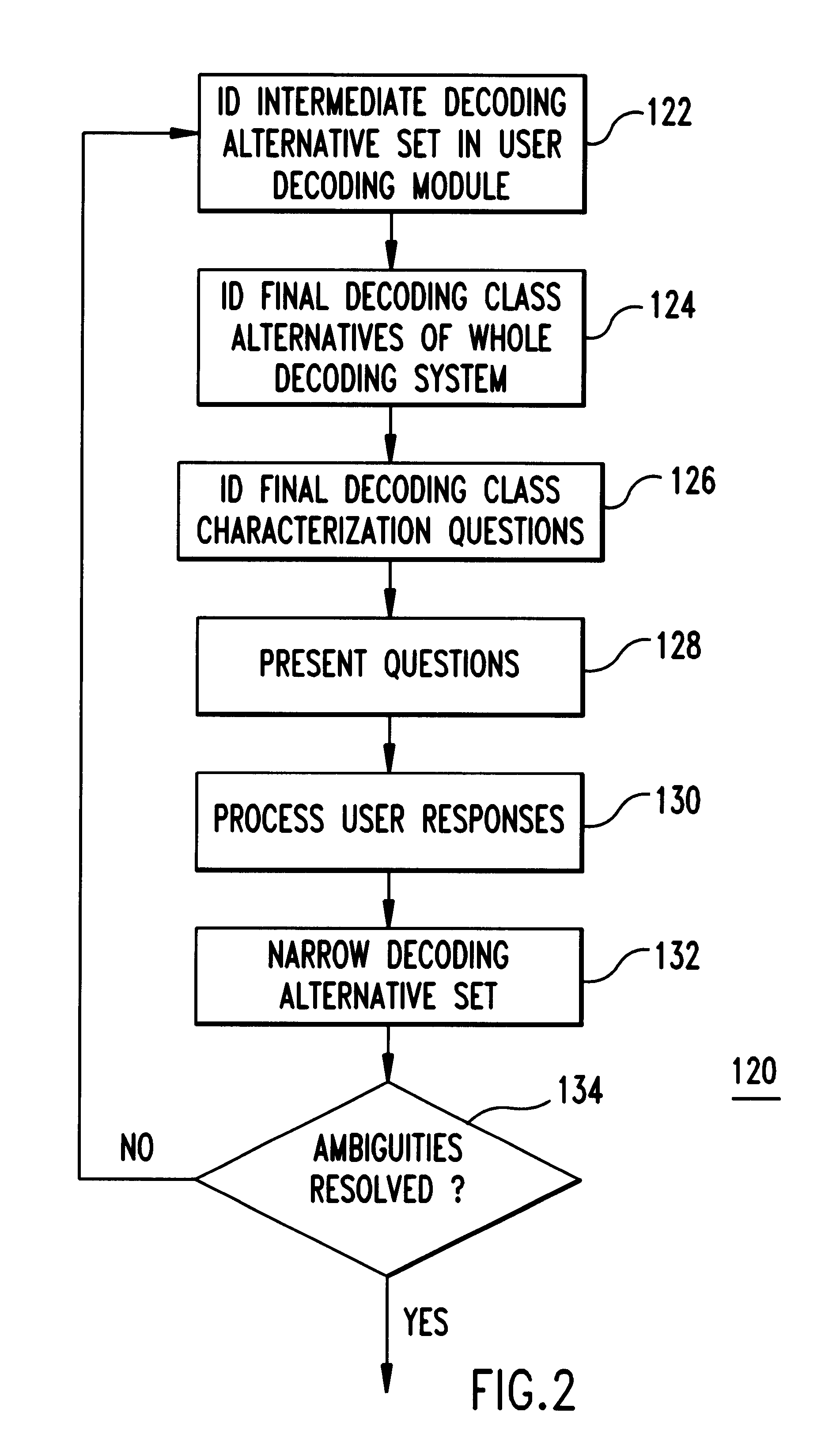System and method for resolving decoding ambiguity via dialog
a technology of ambiguity resolution and dialog, applied in the field of language recognition methods, can solve the problems of too many decoding errors, large number of decoding alternatives, and large number of decoding alternatives, and achieve the effects of improving language improving decoding performance and accuracy, and ambiguity resolution
- Summary
- Abstract
- Description
- Claims
- Application Information
AI Technical Summary
Benefits of technology
Problems solved by technology
Method used
Image
Examples
Embodiment Construction
Turning now to the drawings and more particularly FIG. 1 shows a structural diagram for the preferred embodiment language recognition system 100 with intermediate decoding ambiguity recognition. The decoding system may be, for example, an automatic speech recognition (ASR) system, an automatic handwriting recognition (AHR) system or, a machine translation (MT) system.
In the preferred embodiment speech recognition system 100 there are two decoding levels: fast match and detailed match. During the fast match decoding level a large approximate candidate list is generated very quickly. Then, during the more comprehensive (and slower) detailed match decoding level the fast match candidate list is applied for final recognition. During the detailed match decoding level a unique candidate is decoded and selected.
In this example a user 102 is shown speaking into a microphone 104 to provide language input to an automatic speech recognition system 106. The speech recognition system includes a ...
PUM
| Property | Measurement | Unit |
|---|---|---|
| interaction time | aaaaa | aaaaa |
| time | aaaaa | aaaaa |
| grammatical structure | aaaaa | aaaaa |
Abstract
Description
Claims
Application Information
 Login to View More
Login to View More - R&D
- Intellectual Property
- Life Sciences
- Materials
- Tech Scout
- Unparalleled Data Quality
- Higher Quality Content
- 60% Fewer Hallucinations
Browse by: Latest US Patents, China's latest patents, Technical Efficacy Thesaurus, Application Domain, Technology Topic, Popular Technical Reports.
© 2025 PatSnap. All rights reserved.Legal|Privacy policy|Modern Slavery Act Transparency Statement|Sitemap|About US| Contact US: help@patsnap.com



